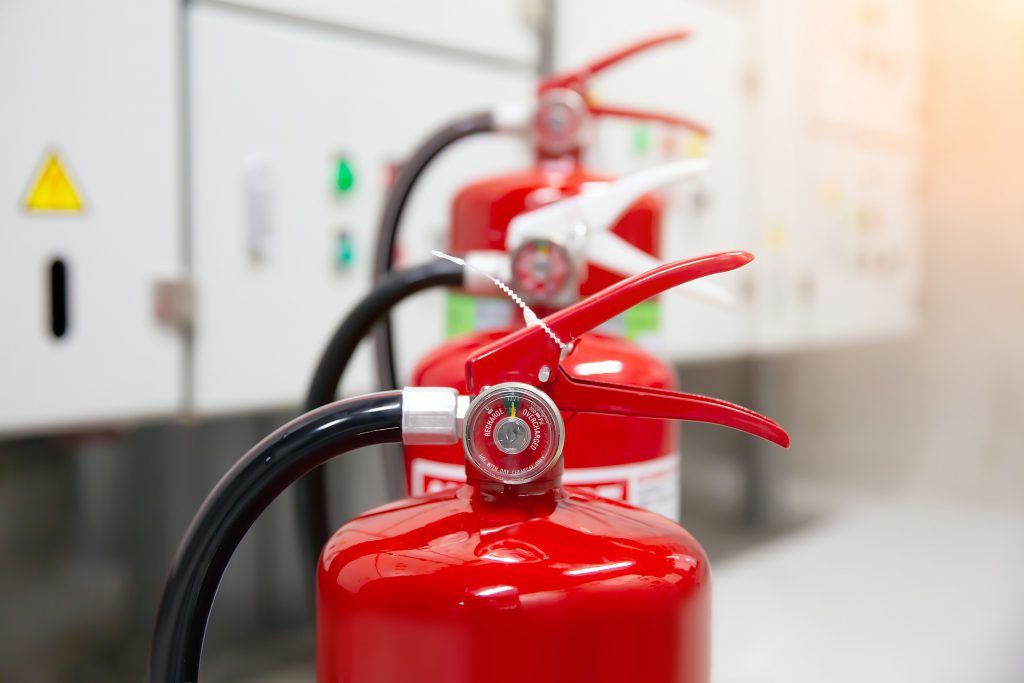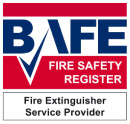19 May 2021
How to Use a Wet Chemical Extinguisher
Knowing how to use a fire extinguisher can literally save lives, but unfortunately there isn’t a catch-all method for fire extinguisher operation. There are several different types of extinguisher – five to be precise – and each one has its own nuances when it comes to effective operation. In this article, Fire & Security Group are going to explain how to safely and effectively operate a wet chemical fire extinguisher.

What is a Wet Chemical Extinguisher?
Wet chemical extinguishers contain a potassium solution that forms a mist when deployed. It combats fires in two ways, which we will explain in this article. You can identify a wet chemical extinguisher by the yellow band around it.
What Type of Fire can Wet Chemical Extinguishers be used on?
Wet chemical extinguishers can be used on Class A (fires involving organic materials like paper and wood) and Class F fires (fires involving cooking oils).
How do wet Chemical Extinguishers work?
As we mentioned above, wet chemical extinguishers affect a fire in two ways. When deployed, the potassium solution is released as a mist – this mist rapidly cools the fire to stop it spreading. Secondly, where oil fires are concerned, the potassium reacts with the oil to form a soapy foam, which acts as a barrier to stop the oil being ignited. This process is known as saponification.
How to use a Wet Chemical Fire Extinguisher
In order to safely extinguish a fire, you need to know the correct way to operate the extinguisher. Operating an extinguisher incorrectly can be ineffective at best and a danger to safety and life at worst.
Only attempt to extinguish a fire if it is of manageable size, you’re confident in your ability to extinguish it, and only if you have the right extinguisher. If any of these criteria are missing, do not attempt to fight the fire – evacuate the building immediately and call the fire brigade.
When using a wet chemical extinguisher, you should follow the PASS system, but with some tweaks to ensure you’re effectively deploying the potassium solution. The PASS system is as follows:
P – Pull the pin: By removing the pin from the extinguisher, you are unlocking it and ensuring that the lever is free to be operated.
A – Aim: Wet chemical extinguishers should be aimed at the surface of the fire. This is because the mist needs to fall onto the fire itself, whereas the jet of water from a water extinguisher would be directed at the base of the flames.
S – Squeeze: Squeeze the lever gently to deploy the mist. This means the mist will fall gently onto the fire – if you squeeze too hard, the coverage area will be smaller and you may miss the fire altogether.
S – Sweep: Some extinguishers require a sweeping motion when being deployed, but you should use slow circular movements when using a wet chemical extinguisher.
You should ensure you use the full contents of the fire extinguisher before leaving the area. The mist will form the aforementioned blanket, stopping the fire from reigniting.
Fire & Security Group supply and install fire extinguishers for all types, including wet chemical extinguishers, for commercial and industrial clients alike. If you’d like to know more about our fire extinguisher installation services, fire safety training or any of our other services, please contact us today and we’ll be happy to help.

